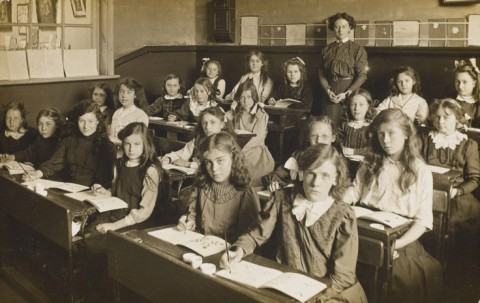Caroline Dennigan
What were classrooms like 100 years ago?
Just how different are today's classrooms compared to 100 years ago?
One hundred years ago, children did go to school, but the classroom and lessons were very unfamiliar by today's standards. The 1870 Education Act was the very first piece of legislation to deal specifically with the provision of education in Britain. However, the act still did not make education for children compulsory. It was not until the Elementary Education Act of 1880 which finally made school attendance compulsory from the age of 5 until the age of 10. In 1893 compulsory education was also extended to blind and deaf children when special schools were established.
Life at school in the Edwardian times was very different to today and the average class size was 60 pupils all with different ages! If the school was sizeable, boys and girls would be taught in separate classrooms. A teacher's job was mainly to teach facts and figures for pupils to recite and write down on a slate board. All female teachers were unmarried because in Edwardian times marriage was considered to be a full-time duty and so when a female teacher married, she had no choice but to give up teaching.
During World War One (28 July 1914 to 11 November 1918) children still went to school, but the equipment in the classrooms and lessons were very different. Pupils would have sat at long wooden benches made from narrow planks usually with no back.
At the front of the classroom would be a large wooden blackboard on a floor stand. Close to the teacher's desk would be a coal-fired stove which would be lit during the cold winter months. Despite the classrooms being very large, the stove would be very small in comparison and children at the back of the room would shiver their way through the school day.
In 1906 the school meals act was passed and schools were allowed to serve dinners for the poorest children who were often malnourished. Sadly, this act was not compulsory and not all schools provided free meals because money for the meals had to be raised from local taxpayers.
Dinners served to the hungry children were heavy and filling. A typical school meal would consist of a thick pea soup with bread and dripping. For dessert, a fruit pudding. For children from poor families, this would be their only daily meal.
These are just a few ways in which schools were different one hundred years ago. Hopefully, it will tempt you and your child to look more into schools of the past and the education system as it was.
Google this phrase to find out more - 'The 1870 Education Act'
To find the BEST private tutor for your child, read this post here: How To Find The Best Private Tutor!


